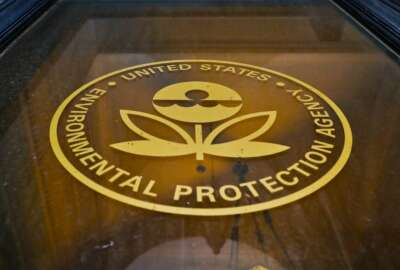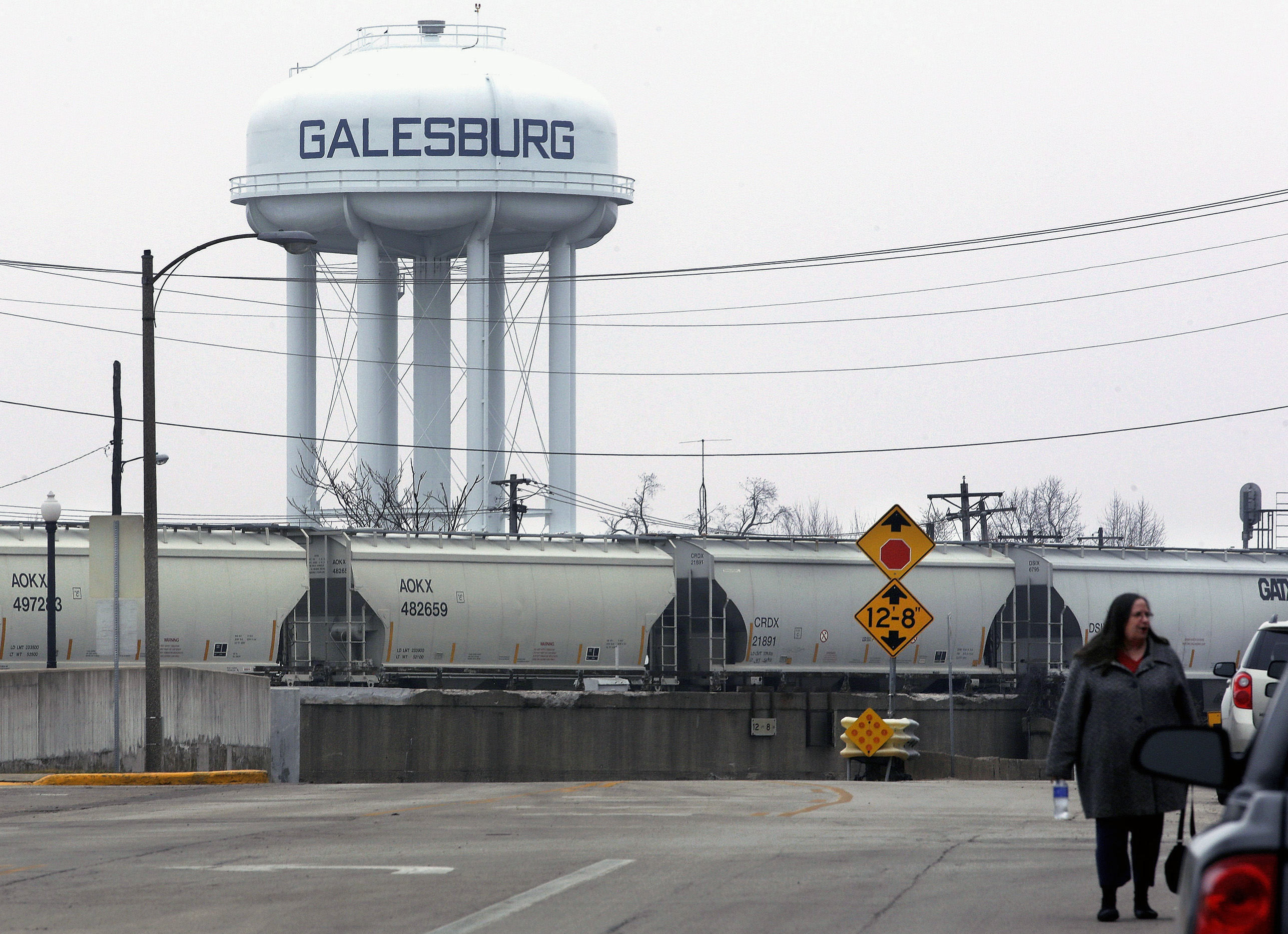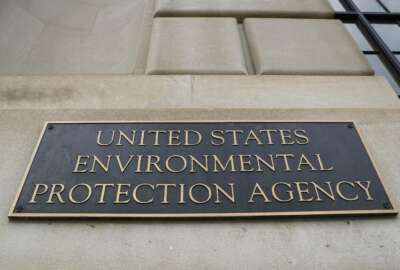
EPA renews a 15-year-old program to save millions of gallons of water
At least one program of the EPA has had consistent support regardless of the administration or the makeup of Congress. It's called WaterSense and it's aimed at...
At least one program of the [Environmental Protection Agency (EPA)] has had consistent support regardless of the administration or the makeup of Congress. It’s called WaterSense and it’s aimed at plugging household leaks thought to result in billions and billions of wasted gallons. For more, the Federal Drive with Tom Temin Federal Drive host Tom Temin spoke with Beth Livingston, WaterSense Lead Environmental Specialist.
Interview transcript:
Tom Temin Tell us more about WaterSense and the sense that EPA has of how much water that is intended to be used ends up leaking or somehow getting wasted every year. It’s a lot, isn’t it?
Beth Livingston It is a lot. So every year, common household leaks actually waste around 1 trillion gallons of water nationwide.
Tom Temin A trillion?
Beth Livingston A trillion. And that’s equal to about annual household water use for nearly 11 million homes. So yes, it’s a lot of water wasted over nationwide. And the average home waste nearly 10,000 gallons of that water in leaks as well.
Tom Temin Wow. That’s enough to fill up all the swimming pools in Hollywood. And WaterSense program then does what? How does it operate?
Beth Livingston So we are a partnership program and we’re sponsored by the U.S. Environmental Protection Agency. So we are both a label for water efficient products and a resource for helping people save water. So we partner with plumbing and irrigation manufacturers, retailers and distributors, homebuilders, local government and utilities.
Tom Temin And is there some kind of, we all know about the electricity labels that have been in the energy sense program for many years. So WaterSense then, is the water equivalent of energy sense.
Beth Livingston Exactly. So we are the sister program to Energy Star here at EPA.
Tom Temin Got it. And, well, are the ratings on like, do you have a lab or do you have a way of testing water efficiency of, I guess, dishwashers and other appliance? What else uses water?
Beth Livingston Yeah. So for WaterSense, we label mainly plumbing and outdoor irrigation products. So we’ve got toilets, we’ve got showerheads and we’ve got bathroom sink faucets. And then outside, we’ve got irrigation systems and spray sprinkler bodies. So for us, we basically have a certification process in place and the federal standard government. We have our federal standards and we have them certify. And the manufacturers make products that will use at least 20% less water than the current federal standards. So, for instance, for toilets, it’s 1.28 versus 1.6. For faucet aerators and accessories, it’s usually a 30% difference off the 2.2 standard flow. And for a shower is that you need to use less, and no more than 2.0 gallons per minute.
Tom Temin And is there a grant program connected with this? The only reason I ask, is because about nine months ago, some people came to my house. I don’t know whether they were from the county or the state or the city, but they went through the house and put in new showerheads, which frankly took some getting used to, because not as much water comes through. And did a few other things in the house, but it also involved light bulbs that they replaced. We got some free light bulbs and two free showerheads. That wouldn’t have been because, well, the showerheads would not have been through a water sense grant, would they?
Beth Livingston So it probably came through your utility or another partnership. So a lot of times the energy companies, since you had light bulbs coming in, will also replace showerheads. Guess what happens when you’re in a shower, you don’t know shower with cold water, you shower with hot water. So that’s where the energy part comes in for showerhead. So a lot of the energy companies will replace the showerheads for that reason.
Tom Temin So that was really an electricity gambit as much as a water gambit.
Beth Livingston Right. So it helps. Americans say water, because we know the water is all we’ve got. We can’t make water. What we have is what we’ve got. So it’s good to save it.
Tom Temin And in partnering with industry to try to encourage these more efficient standards, for things like showerheads and toilets and so forth. There’s also, let’s put it this way, a performance issue. Like if a showerhead really feels feeble, people might be in there twice as long. And if a toilet doesn’t quite do its job efficiently, you might use it twice or might flush it twice, this kind of thing. So how do you work with industry to balance performance such that people don’t end up wasting more water because it’s too weak the first time around?
Beth Livingston So that’s the old stuff. So that’s why WaterSense came into being, because we wanted to have products that save water and perform as well or better than standard models. So these manufacturers, you know them, you can walk into any Home Depot or Lowe’s or any other supply store and see all the name brands. So they worked with WaterSense in the beginning to make sure that these standards, like I said, performs well and saves water. So the showerheads of old are not the same. They’ve got all kinds of different engineering’s in place in different ways. They all have their different manufacturing capabilities and engineering capabilities that they’ve created to make sure that these things perform just as good, if not better than standard models.
Tom Temin We’re speaking with Beth Livingston. She’s lead environmental specialist for the WaterSense program at the EPA. And just tell us more about the leak prevention or the leak repair program that you run kind of a sensitivity week every year. And how do you get in, I mean the leaks are behind the walls often. That’s a different issue than the performance of appliances.
Beth Livingston Right. So on our leaks that we’re talking about are common household leaks. So these are visible leaks. Now, these are ones that if you’re looking in your bathroom, for instance. So that’s the largest use of water in the home, which is more than 50% of your indoor water use. So we’re talking about looking at the faucet, looking at the showerhead, looking at tub spouts. Toilets are usually your biggest culprit. And you can look at pipes under the cabinets. So, for instance, for toilets, we call them silent leaks or running toilets or a.k.a. ghost flushes. So you don’t realize that your toilet is leaking. So here’s an easy, easy test that we talk about during this week. So you take off the top of the tank, you put some food coloring in it, wait 10 minutes, and if water coloring shows up in the bowl, then you know you have a silent leak and you got to flushed out so it doesn’t stain your bowl. But usually that just needs to be replaced for the flapper. And it’s a very simple rubber device that holds water in the tank, releases water into the bowl when the toilet is flushed. And it’s, like I said, easily replaced. They should be replaced every five years anyway, but they don’t cost much either. There are a couple bucks.
Tom Temin Yeah. You can get a whole bag of flappers at Home Depot for like $10.
Beth Livingston Yeah, they’re not expensive. I would suggest, since there are a bunch of different flappers, either take your old flapper with you or take a picture of it so you make sure you get the right one for your toilet, and you’re not going back and forth to the store.
Tom Temin All right. And so then, how do you measure, like the results if a trillion gallons a year is estimated to be lost? How do you get people to do that through this WaterSense program?
Beth Livingston So we have partners throughout the country being our manufacturers as well as our utilities. And they message to their partners and to their customers in the area. A lot of them hold workshops, they have races, they do online workshops, they do stuff at the local retailers, like the Home Depot and Lowe’s, so that people learn how to fix leaks. They also put stuff on social media. We’ve got a lot of videos on our website as well, which is a great campaign. We’ve been doing it for 15 years.
Copyright © 2025 Federal News Network. All rights reserved. This website is not intended for users located within the European Economic Area.
Tom Temin is host of the Federal Drive and has been providing insight on federal technology and management issues for more than 30 years.
Follow @tteminWFED





